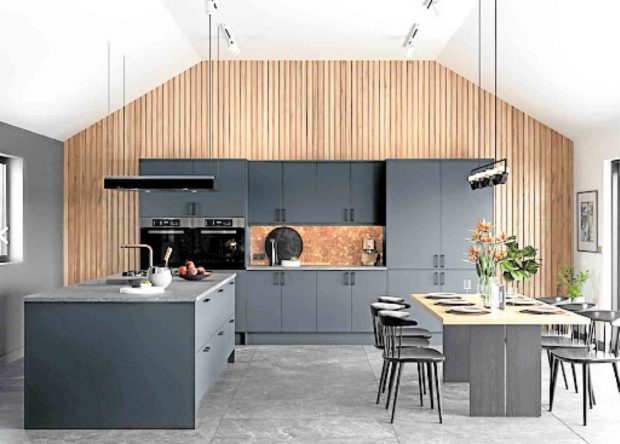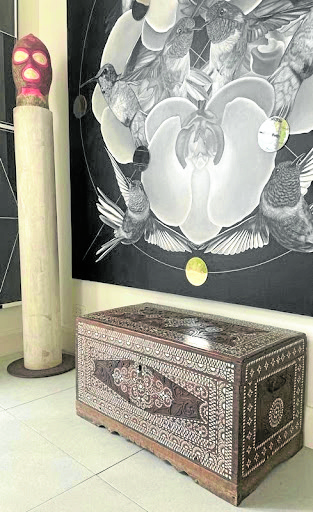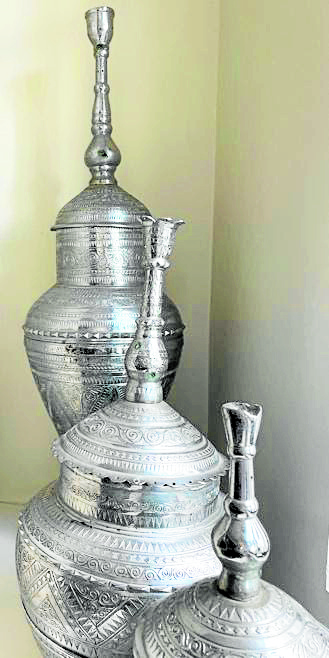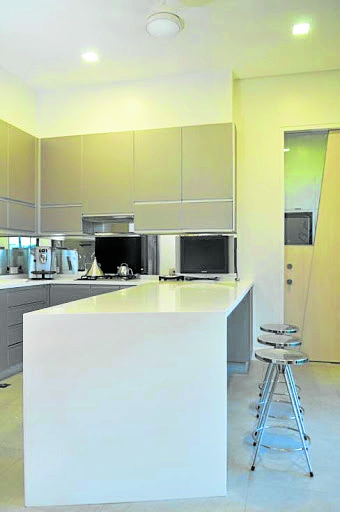Who is your homemaker mother archetype?

It’s not surprising that as kitchen designs evolve, they become more concentric and cater to any other uses.
My mother was born after World War II erupted, two years after Pearl Harbor was bombed. Despite being born into a time of destruction and violence, she turned out quite the opposite in temperament—funny, extremely friendly and flowing with kindness, likely a product of being doted upon being the youngest of nine siblings.
My grandmother’s favorite war time story was about my mom getting lost in the streets of Sampaloc during the bombing of Manila in 1945 when they, along with many others, lost their home to the fires. She was a toddler then, and in the flurry of panic, wandered away. My grandparents scoured the streets for two days and finally found her on the sidewalks chatting up and entertaining a group of Japanese soldiers. She was unharmed and seemed to have been a source of amusement. Such was my mother’s personality. She could speak to anyone. Extremely funny and witty, her jokes sometimes mischievously poked fun at a trivial error or made light out of a difficult matter.
Like many women of her generation, she was a full-time housewife or a “house-mom,” supervising, entertaining, making sure that the home functioned for us to enjoy. Sometimes, she just made herself available for us amid her leisurely pursuits. And while she didn’t cook, she made sure we were all happily well fed.
She had a collection of special edition National Geographic Magazines, Time, Life and the Saturday Evening Post. She was also a big Elvis Presley fan, and so we had posters and books of The King, testaments to her fandom. Then she had her collection of figurines—Chinese fishermen, bells, vases and elephants in all shapes, materials and sizes. She had all her Maranao brass items, too—pieces she found exotic, and to which I personally clung on for dear life when we split her things among three children. All these were her personal expressions.
You could sense her artistry in her intuitive mind as she poured her free time into cross-stitching or recording music in cassette tapes for friends, thanks to her massive collection. Aside from the more than 2,000 vinyl albums, she also amassed postal stamps, Zippo lighters, and hundreds of restaurant matches—those branded little packets that restaurants and coffee shops (they weren’t called cafés then) placed on an ashtray in the center of their dining or cocktail tables during the ’60s when smoking was fashionable.
Article continues after this advertisementShe made our home enjoyable with a degree of freedom. Looking back, she had her declared and undeclared rules for a home, as against merely having a beautiful house. We lost her to cancer some 28 years ago when she had just turned 50. But oh, how her legacy lives on.
Article continues after this advertisementIn her home, no space was off limits. I loved that we could use any part of our house. Back then and maybe still now, it was not unusual for homes to have spaces that are reserved for guests, hence off limits to the kids. In our case, all spaces were to be enjoyed, with a strict “leave it as you found it” policy.

This Maranao ‘baul’ laden with inlays in both traditional geometric and swirling ‘okir’ patterns, mixing well with raw cement and modern art.
We had many spaces where we could gather. In a typical Filipino home, this is usually the dining room or the kitchen. It was in ours, too. But we also had a mahjong table in our living room, which doubled as my mother’s worktable, or a coffee table for when her sisters came over to cackle over gossip, merienda and cups of coffee. As we grew up, we used it to entertain friends. It had cozy club chairs and the table itself had all these drawers and trays to accommodate food and beverage. Upstairs, we had a breakfast table at a sunny corner of our family room. Here we came together in the mornings, for coffee, planning and a debriefing. “Pull a chair. So, who’s driving you to school today? Me?”
The outdoors crept in. She would probably declare that theirs was the generation of the original “plantitas” and “plantitos.” I remember visiting nurseries quite frequently with her. Every dead corner at home or every stiff space had to have its softening by way of a large potted plant. “We don’t look like a forest naman, no?”
Ventilate naturally. A house has to breathe. Have your windows tall and open up breezeways so warm air can find its way out on its own. Make that physical and visual connection to the outside. Let sunshine in and naturally rid your home of mosquitoes, molds, and even pathogens. Our living spaces had windows and curtains always open. Doors had screens, and the help had to dust often. “Why is that window closed? I can’t breathe!”
Be organized–yes, in the way she kept her collections together in glass display cabinets which seemed to be so “in” during the 70s and 80s.

Maranao gadurs, originally brass, and soon to be reinstated to their true material, are precious for their cultural value.
They were properly sorted, classified, arranged and displayed, or kept away, organized, labeled and filed. She expected all of us to do the same for our rooms. We’d hear a #$&#&%@!!!! when our rooms were unkempt. In my case, she quieted down when I was in architecture school. She accepted the chaos and the frenzy as inherent parts of our process of creating.
Share your home. People came in and out of ours: her friends, my dad’s friends, their siblings, my cousins, our own friends. It was odd to come home to an empty house. I had a writer-aunt who would drop in to write her articles by that favorite mahjong table because she simply enjoyed the atmosphere. I still don’t understand how she could write with the flurry of activity around her. Our friends hung out a lot at our place too, so much so that there were times we had to dine in shifts. “Next!”
During this current flux of lockdowns and quarantines, I couldn’t help but look at the different homes I had lived in. This is my 7th in this lifetime. And how I appreciate every single one of them. For now, I don’t have to worry about my children getting lost in wartime chaos, for everyone’s chaos seems to be on the inside.
Such is the importance of that nurturing mother, that archetype that teaches us to be right at home in our own places and spaces, in our own little nooks and crannies, wherever those are. It is not so much the house one remembers, but the care that comes with it, so that living in one’s home can truly be that of a life well-lived.
Happy Mother’s Day. And thank you, always.
